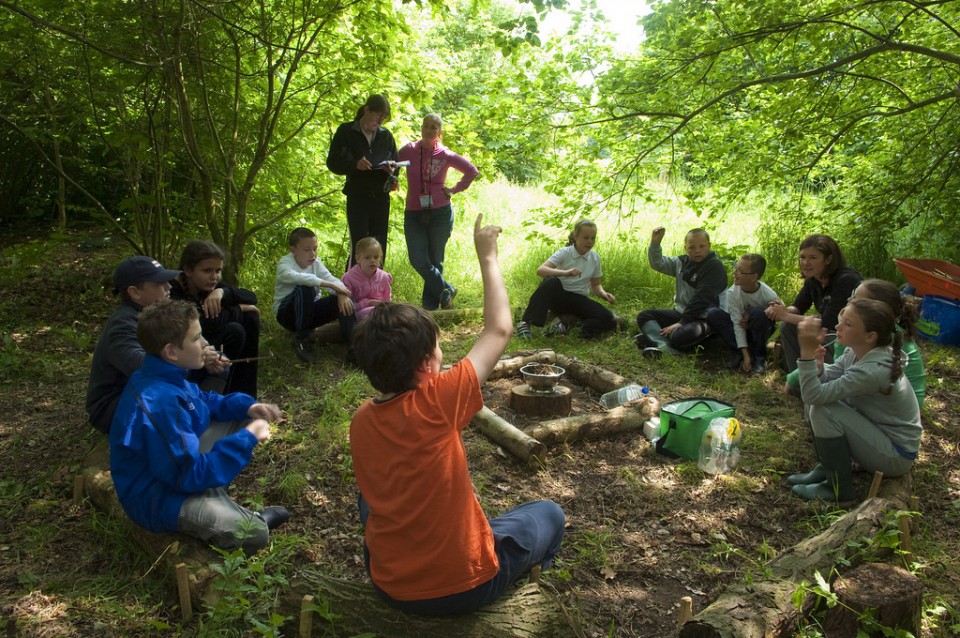Entertainment
Can Children Benefit From Learning Outdoors?

Many teachers and Heads are well aware of the benefits of outdoor learning, offering students the chance to go on trips to outdoor education centers at specific times during their education. However, whilst these isolated opportunities for outdoor learning will indeed greatly benefit students, there will also be opportunities for children to be taught outdoors on a much more regular basis.
Creating an outdoor classroom within the grounds of the school itself can offer many distinct positive benefits to children and teachers alike. Not only will the simple change of environment serve to inspire and excite many of the students, but the freedom from four walls can also help children to feel less confined and more open during specific lessons.
There is a greater call for outdoor education today than ever before, with fewer students than ever missing out on opportunities to head away on school trips. Those outdoor education centers and even those ski trips to France are fewer and further between than they once were, with many schools struggling to find the time or the budget to organize such trips on an annual basis.

Financial pressures have been coupled with regulation issues, with many more hoops having to be jumped through today than there were twenty years ago. As such, the simple task of organizing trips has become a nightmare of paperwork and box-checking, with the outings themselves becoming far less enjoyable in the process.
Teaching children in an outdoor environment offers many advantages though, and whilst outdoor classrooms within the school grounds may not offer quite the same scope for edification as a week-long stay at an outdoor education center where everything from team-leading to teamwork will be developed, learning outdoors will still serve to inspire and excite, and will even help children to get more active.
For specific lessons there will be specific benefits, with the likes of art and science being improved greatly by the opportunity for students to draw impressive vistas and get up close to the plants or wildlife they are studying. In English, the change in surroundings can inspire whole new narratives in creative writing.
However, the simple fact remains that being outside helps people feel less frustrated and confined. In turn, this means that those learning outside will be less likely to become difficult and instead will be far more likely to work cooperatively with students and teachers alike.

Of course, an outside environment may also simply be more productive for certain lessons. Whether experiments need to be carried out or items need to be built using natural resources, moving lessons outside is likely to be both practical and inspirational in equal measures, and in some cases the change in surroundings alone may be all it takes to completely inspire a whole class.
An outside classroom will be less structured than an indoor teaching space and in turn will offer more scope for learning and more chance for everything from problem solving to decision making, helping children to develop beyond simply being given new information on a specific subject.
About the Author – Adam Howes is a freelance writer and blogger. He regularly contributes articles for companies such as CAD Shelters.
-

 Tech11 years ago
Tech11 years agoCreating An e-Commerce Website
-

 Tech11 years ago
Tech11 years agoDesign Template Guidelines For Mobile Apps
-

 Business6 years ago
Business6 years agoWhat Is AdsSupply? A Comprehensive Review
-

 Business10 years ago
Business10 years agoThe Key Types Of Brochure Printing Services
-

 Tech8 years ago
Tech8 years agoWhen To Send Your Bulk Messages?
-

 Tech5 years ago
Tech5 years ago5 Link Building Strategies You Can Apply For Local SEO
-

 Law5 years ago
Law5 years agoHow Can A Divorce Lawyer Help You Get Through Divorce?
-

 Home Improvement6 years ago
Home Improvement6 years agoHоw tо Kеер Antѕ Out оf Yоur Kitсhеn































